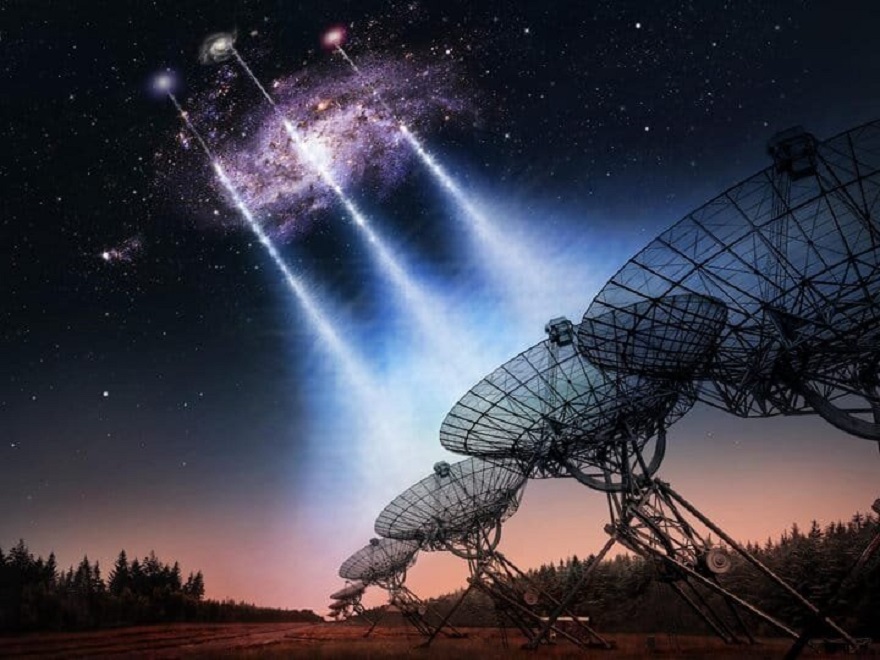Recently, the Westerbork telescope array in the Netherlands has been updated. A powerful supercomputer was connected to it. Thanks to this, scientists were able to establish the exact position of five fast radio bursts in a short time and found that some of them pierced the neighboring Triangulum galaxy.

Radio telescope becomes more considerate
Dutch scientists working with the Westerbork array of radio telescopes on April 12 published the results of working with it after a new powerful supercomputer was attached to it. They said that thanks to this they were able to see five fast radio bursts at once in a short time. And found that some of them passed through the neighboring Triangulum galaxy.
The Westerbork Observatory consists of 12 dish-shaped antennas working as one. Due to this, they have the sensitivity of a radio telescope with a much larger diameter. However, previously, the signals from each individual antenna were simply bored, so the sensitivity relative to the direction of the signal was quite small.
But after the new Apertif Radio Transient System supercomputer was connected to the receivers, they were able to work with the signals from each antenna in a much more complex way. Thanks to this, it was possible to accurately localize points in the sky from which even such short-term pulses as fast radio bursts came.
Why are fast radio bursts so mysterious
Fast radio bursts do occur in a very short time. They last only a few milliseconds. But at the same time, their energy is just fantastic. Scientists have found that they are born by one of the most powerful explosions in the Universe.
But what exactly is so powerfully exploding, astrophysicists are still not sure. Neutron stars are best suited for this role. When too much matter begins to fall on them, they can convert its excess into energy, mainly in the radio range.
However, it is very difficult to verify this assumption. The origin of fast radio bursts from neutron stars has been proved only for a few cases relatively close to us. Most of them occur at distances at which the pulsar is not visible in any range.
Triangulum galaxy
That is why the new ability of the Westerbork array to very accurately determine the position of the source of a rapid burst turns out to be so important. And it had a rather unexpected side effect. It turned out that three of the five recorded radio bursts passed through the Triangulum galaxy. It is located only a few million light-years away from us.
Piercing the galaxy with fast radio bursts is not new. They regularly pass through the Milky Way and other star systems. Life on the planets does not feel these events at all. But it is felt by invisible electrons scattered in interstellar space.
Radio bursts excite them and they begin to emit energy themselves and this signal is also seen by antennas on the Earth. It was thanks to three pulses that came from afar that Dutch scientists were able to understand how invisible matter was distributed in a neighboring galaxy.
According to phys.org
Follow us on Twitter to get the most interesting space news in time
https://twitter.com/ust_magazine

